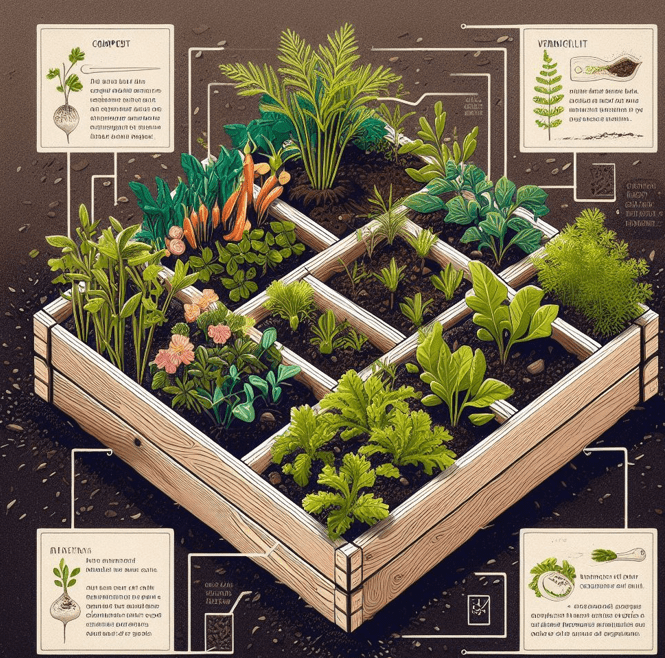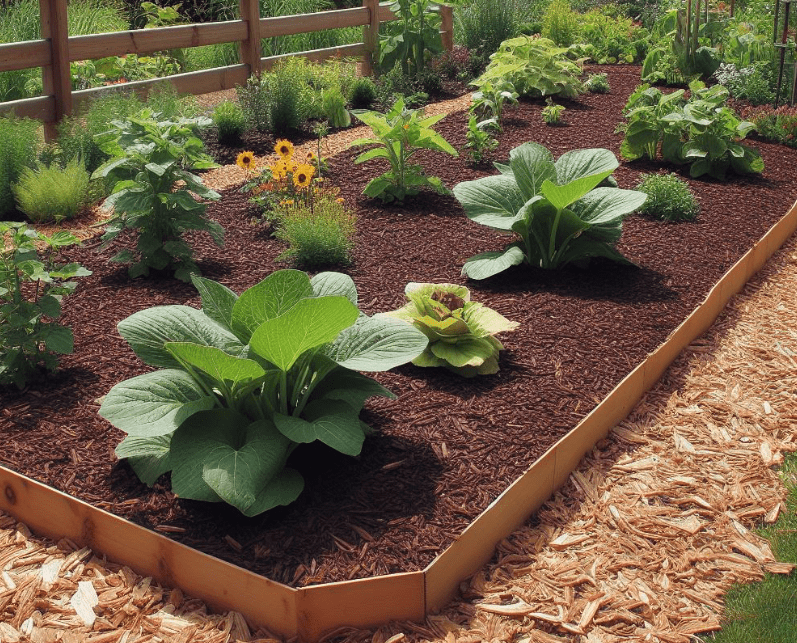
Discover the secrets of No-Dig Gardening, a sustainable and effortless approach to cultivating lush gardens. Learn from experts like Charles Dowding, explore beginner-friendly methods, and understand the benefits of this soil-friendly technique. Perfect for eco-conscious gardeners seeking a thriving, low-maintenance veggie patch or flower bed. Dive into no-dig methods for healthier soil and bountiful harvests.
As a passionate gardener, I’ve always believed that the secret to a lush garden lies beneath our feet – in the soil itself. This belief led me to embrace no-dig gardening, a method steeped in history yet brimming with modern relevance. It’s not just about growing plants; it’s about nurturing the entire ecosystem from the ground up.
The Heart of No-Dig Gardening
At its core, no-dig gardening is a testament to the saying, “If it ain’t broke, don’t fix it.” The soil is a complex, living network teeming with microorganisms, fungi, and worms. By avoiding unnecessary digging, I’m not just saving my back from strain but also safeguarding this intricate web of life. This approach is a cornerstone in my fight against climate change, as it helps sequester carbon in the soil rather than releasing it into the atmosphere.
A Symphony Below the Surface
The magic of no-dig gardening lies in its simplicity. Each year, I spread a thin layer of compost over my beds. This isn’t just a blanket for the soil; it’s a feast for the myriad of creatures that call it home. These tiny architects work tirelessly, creating a symphony of tunnels and pathways that aerate the soil and improve its structure. This natural process ensures my garden is resilient, even in the face of torrential rains or biting cold.
The Dance of Fungi and Plants
In this underground ballet, mycorrhizal fungi play a starring role. These fungi form a symbiotic relationship with plant roots, enhancing their access to water and nutrients. It’s a beautiful dance of give and take, illustrating the interconnectedness of nature.
Less Effort, More Joy
Adopting no-dig gardening has been a revelation. It’s not just about being kind to the earth; it’s also about being kind to myself. The reduced need for watering, weeding, and digging means more time to enjoy the fruits of my labor. And I’ve learned that prevention is better than cure when it comes to weeds. By not disturbing the soil, I keep weed seeds buried and out of trouble.
Starting a No-Dig Bed
Embarking on a no-dig journey is a breeze. I use a simple trick for weed-ridden areas: cover them with cardboard and a generous layer of compost. This smothers the weeds and gives me a blank canvas to work with.
Embracing Green Manures
To further enrich my garden, I turn to green manures. These living mulches are a buffet for soil life, enhancing biodiversity and protecting the soil from erosion. They’re not just functional; they’re a haven for wildlife and a feast for the eyes when they bloom.
Preparing for Winter’s Chill
As winter approaches, I take extra steps to shield my garden. Mulching with locally available materials, like sheep fleece or wood chips, provides a cozy blanket for the soil. These materials slowly break down, feeding the soil and ensuring its vitality.

The No-Dig Garden Bed: A Layered Approach
In my no-dig vegetable garden, I employ a layered strategy. The no-dig garden bed layers include a base of cardboard – a fantastic weed suppressant – topped with compost and other organic materials. This layering enriches the soil and simplifies the process of creating a fertile growing space. The no-dig veggie patch has become a testament to the effectiveness of this method.
The Benefits of a No-Dig Approach
The benefits of no-dig gardening are manifold. It’s not just about reducing labor; it’s about fostering a healthier ecosystem. No-dig gardening keeps the soil structure intact, promoting a vibrant microbial life that benefits plant growth. Moreover, no-dig farming and gardening contribute to carbon sequestration, making them environmentally sustainable practices.
How to Start Your No-Dig Garden
You can start a no-dig bed at any time of year. If your plot is mostly weed-free, just hand weed any there, spread a mulch of compost and dig no more.
For a very weedy plot, cut low (raking the weeds up and composting them), cover with a layer of overlapping cardboard, such as the brown card from delivery boxes, and add 5cm of compost mulch. This can be anything composted: bought in, garden waste, wood chip, animal manure, etc
The Versatility of No-Dig Gardening
No-dig gardening is not limited to vegetable patches. I’ve also explored no-dig flower beds and no-dig raised beds. The no-dig raised garden beds are particularly beneficial for those with limited mobility or space constraints. They offer an easy way to cultivate a garden without the strenuous effort of digging.
The Global Appeal of No-Dig Gardening
The no-dig gardening method has gained popularity worldwide, with variations like no-dig gardening in the UK and NZ adapting the principles to local conditions. This global adoption underscores the versatility and effectiveness of the no-dig approach.
No-dig gardening is more than a technique; it’s a philosophy of working harmoniously with nature. It’s about understanding and respecting the complex web of life beneath our feet. Whether it’s a no-dig veggie garden, a no-dig flower bed, or a no-dig raised bed, the principles remain the same – nurture the soil, and it will nurture your plants in return.
Final Word
In conclusion, no-dig gardening is more than a method; it’s a philosophy. It’s about working with nature, not against it. By protecting the soil, I’m not just cultivating a garden; I’m nurturing a living, breathing ecosystem that rewards me with beauty and bounty, season after season.

























